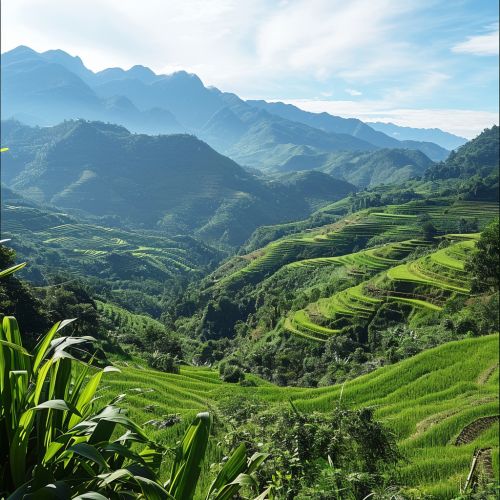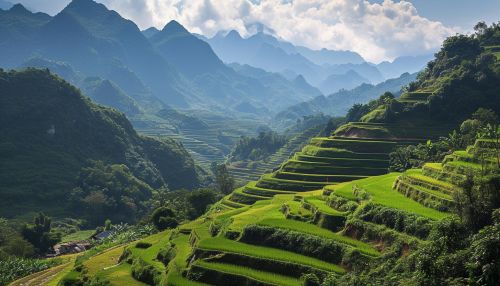Vietnam
Geography
Vietnam, officially known as the Socialist Republic of Vietnam, is located on the easternmost part of the Indochina Peninsula in Southeast Asia. It is bordered by China to the north, Laos to the northwest, Cambodia to the southwest, and the South China Sea, referred to as the East Sea in Vietnam, to the east and south. With a total land area of approximately 331,212 square kilometers, Vietnam is roughly the size of Germany and ranks as the 65th largest country in the world.


History
Vietnam's history can be traced back to around 500,000 years ago, with the earliest known inhabitants being the ancient Vietnamese people, or the Kinh, who were part of the Dong Son culture. The country's history is marked by a series of dynastic periods, foreign invasions, colonial rule, and wars.
Ancient History
The ancient history of Vietnam begins with the Hong Bang period (2879–258 BC), when the country was ruled by the Hung kings. The most notable event of this period was the legendary war between the Trung Sisters and the Chinese Han dynasty, which has been a symbol of Vietnamese resistance against foreign invasions.
Dynastic Periods
The dynastic periods of Vietnam were marked by the rise and fall of various dynasties, such as the Ly, Tran, Le, and Nguyen dynasties. These periods were characterized by significant developments in Vietnamese culture, politics, and society.
Colonial Period
The colonial period of Vietnam began in the mid-19th century, when the country fell under French rule. This period was marked by the struggle for independence and the development of nationalist movements.
Modern History
The modern history of Vietnam is characterized by the First Indochina War (1946–1954), the Vietnam War (1955–1975), and the country's reunification in 1976. The post-war period saw significant economic and political reforms, leading to Vietnam's emergence as one of the fastest-growing economies in Asia.
Economy
Vietnam's economy is a mixed socialist-oriented market economy, which means it has elements of both a planned economy and a market economy. The country is known for its rapid economic growth, with its GDP growing at an average rate of 7% per year since the 2000s. Major sectors of the economy include agriculture, industry, and services.
Agriculture
Agriculture is a significant part of Vietnam's economy, employing about 40% of the total workforce. The country is one of the world's largest exporters of rice and coffee. Other important agricultural products include tea, pepper, cashews, and rubber.
Industry
The industrial sector in Vietnam is diverse, with key industries including manufacturing, construction, mining, and power generation. The country is a major exporter of electronics, textiles, and footwear.
Services
The services sector in Vietnam has been growing rapidly in recent years, contributing to over 40% of the country's GDP. Key service industries include tourism, retail, telecommunications, and finance.
Culture
Vietnamese culture is a complex adaptation of Chinese, Southeast Asian, and French influences. The country has a rich cultural heritage with a variety of traditional festivals, music, dance, literature, and art.
Festivals
Vietnam has a plethora of traditional festivals, the most important of which is the Lunar New Year, or Tet. Other notable festivals include the Mid-Autumn Festival, the Hung Kings Temple Festival, and the Perfume Pagoda Festival.
Music and Dance
Traditional Vietnamese music varies between the country's northern and southern regions. Northern classical music is Vietnam's oldest form of music, while southern music is influenced by the tunes and themes of the Mekong Delta. Traditional dance in Vietnam includes fan dance, lantern dance, and lion dance.
Literature and Art
Vietnamese literature is rich and diverse, with a history dating back to the country's early dynastic periods. Vietnamese art, influenced by a mix of indigenous and foreign cultures, includes pottery, silk painting, lacquerware, and woodblock prints.
